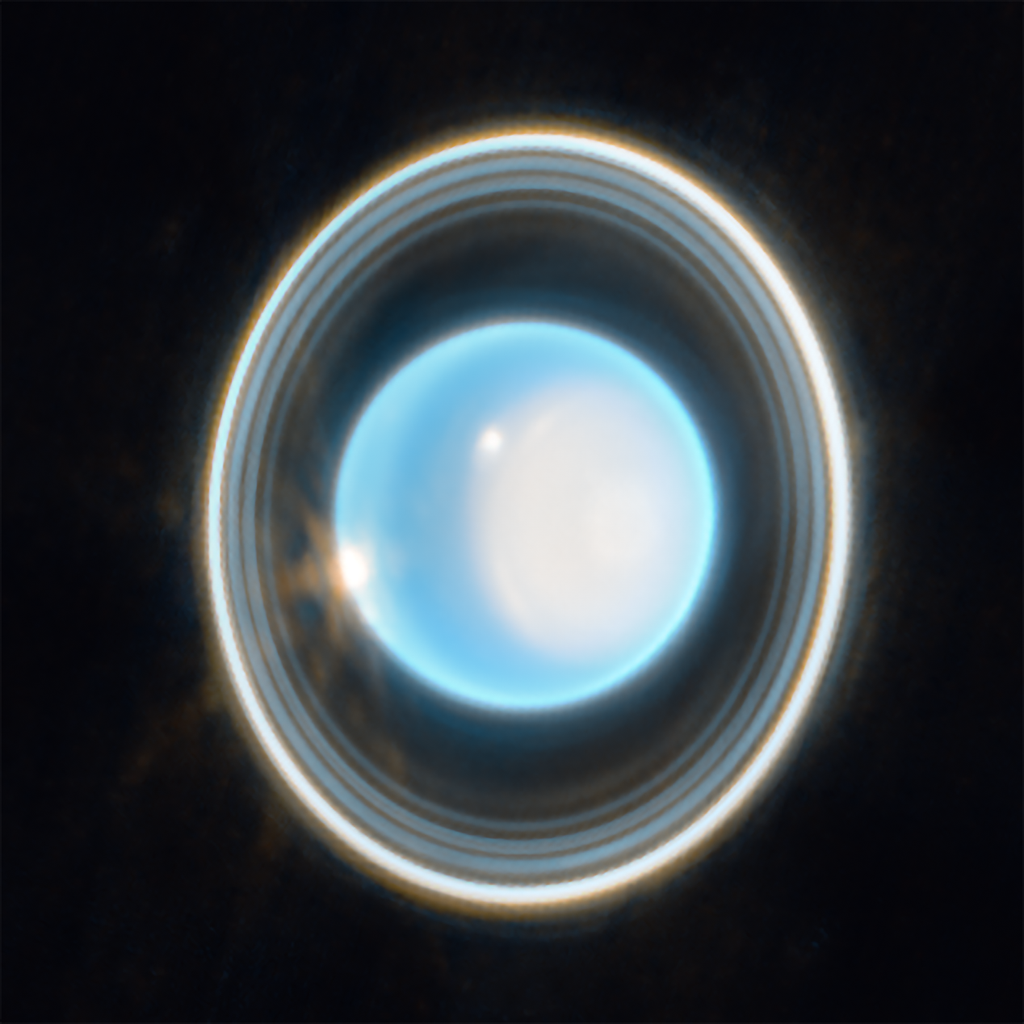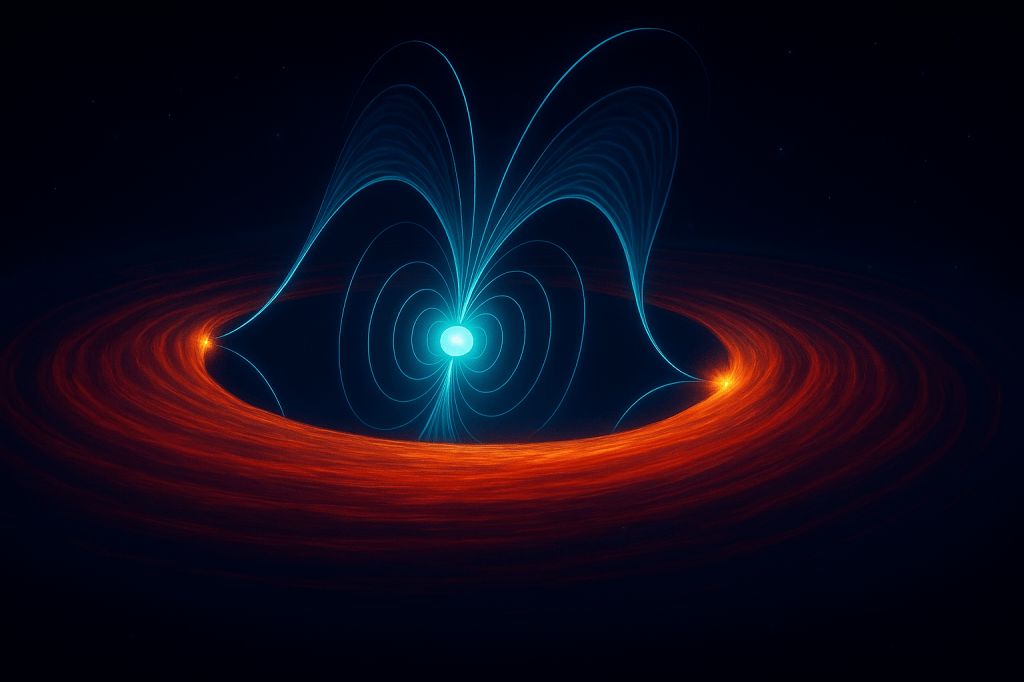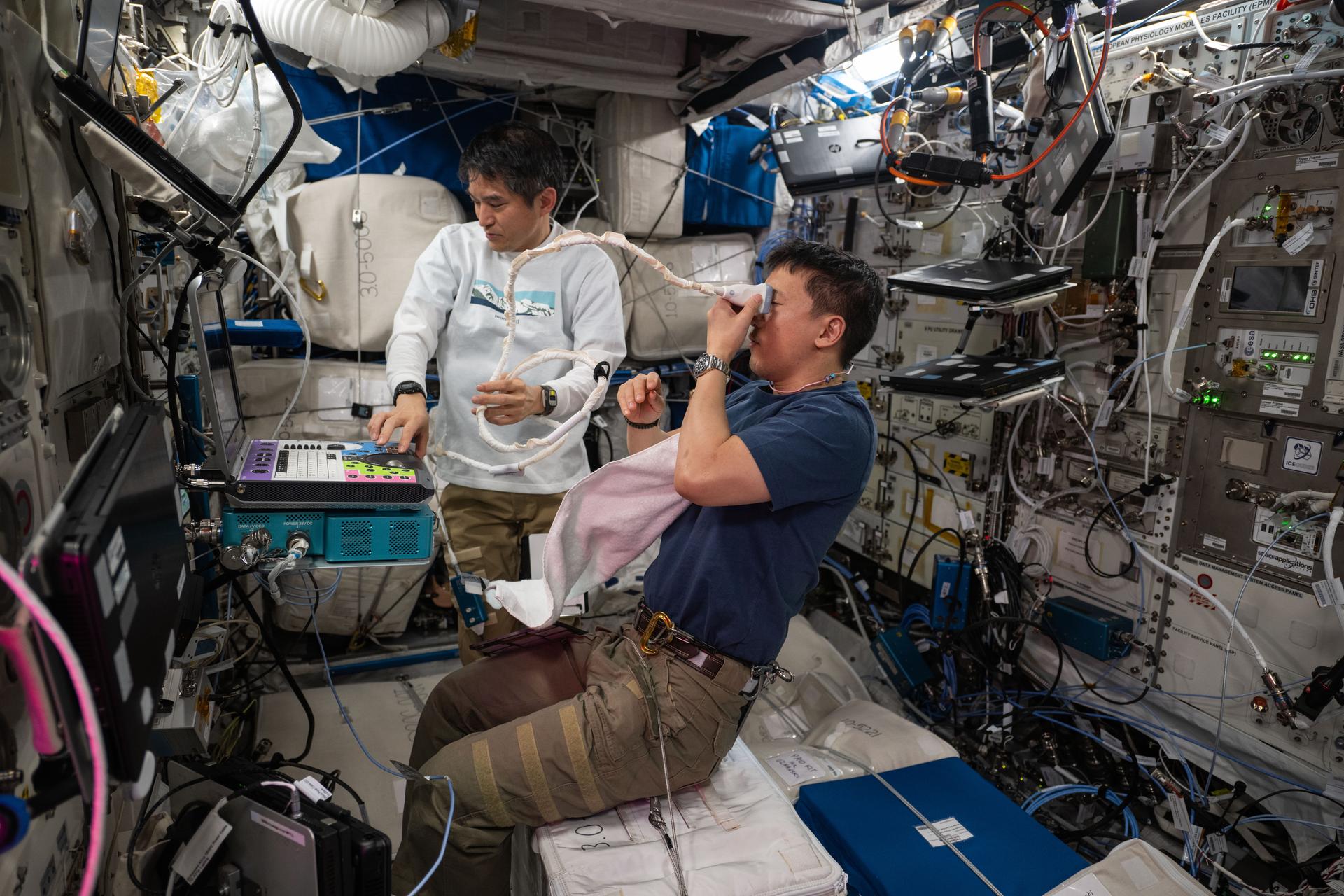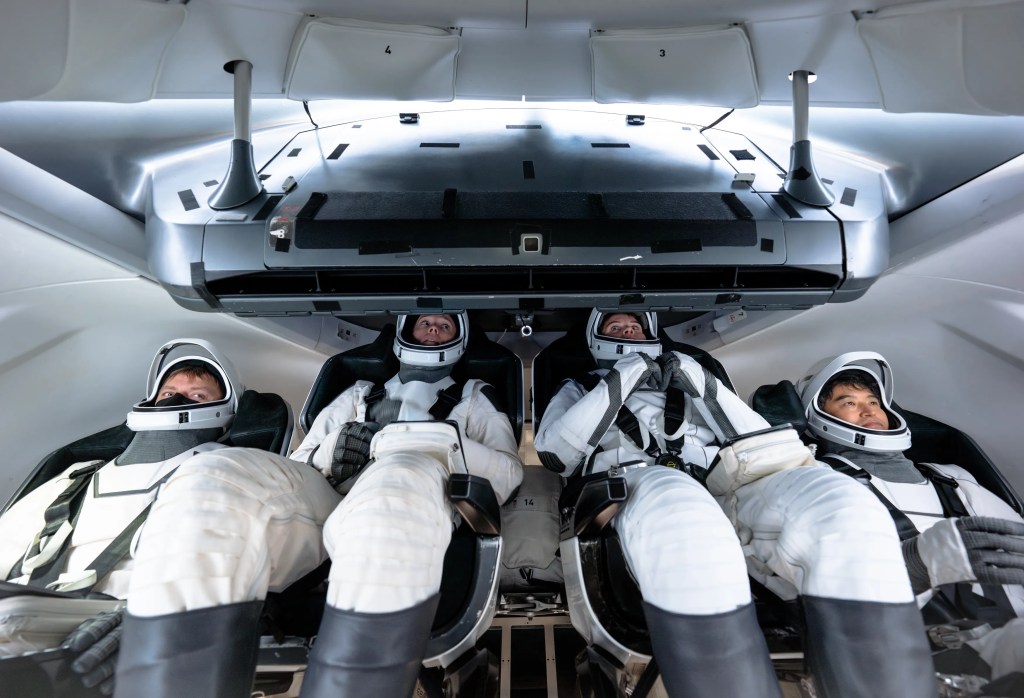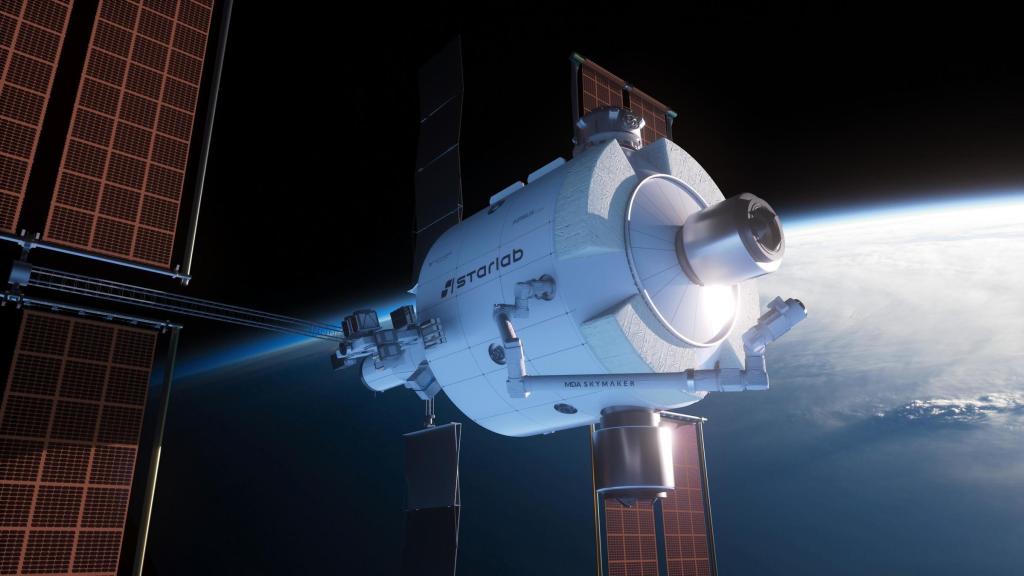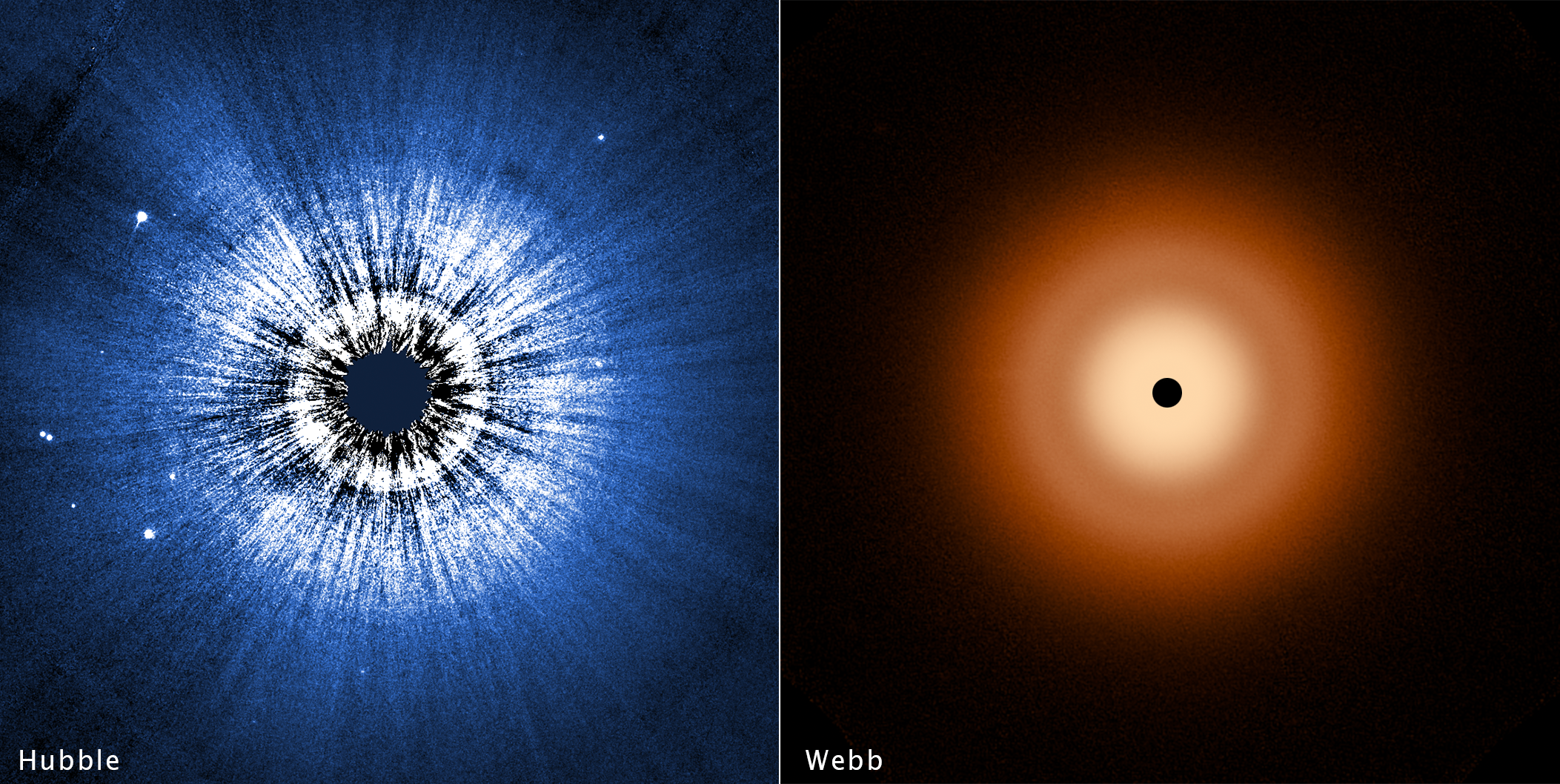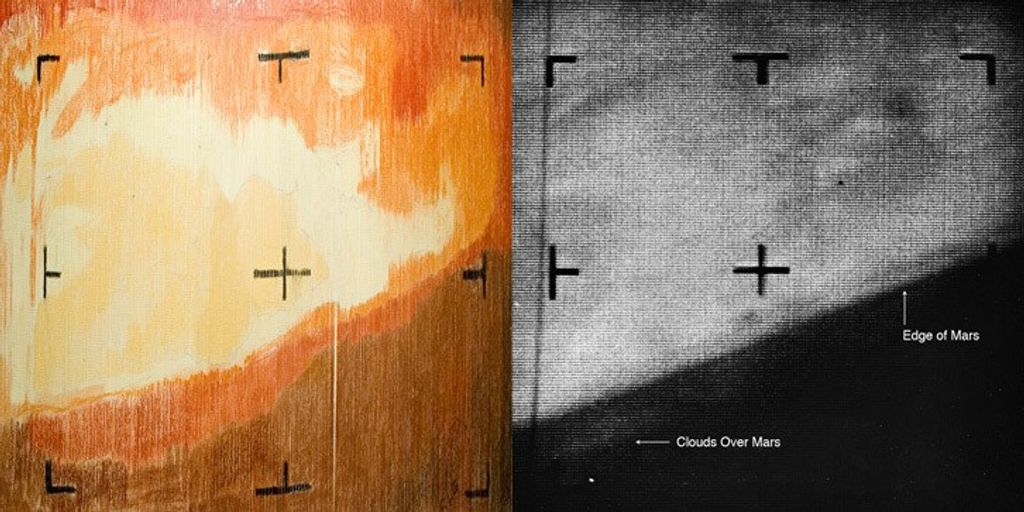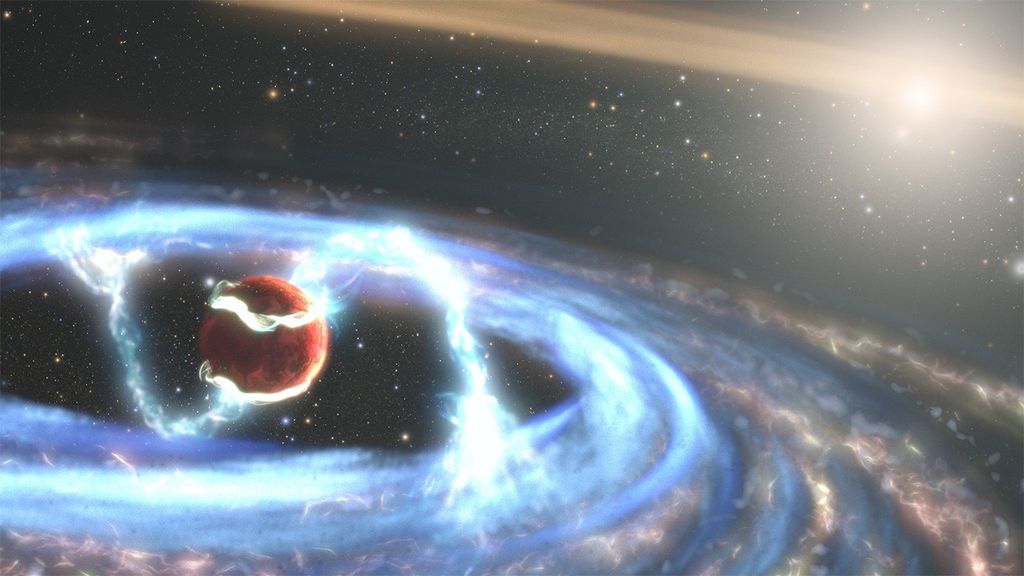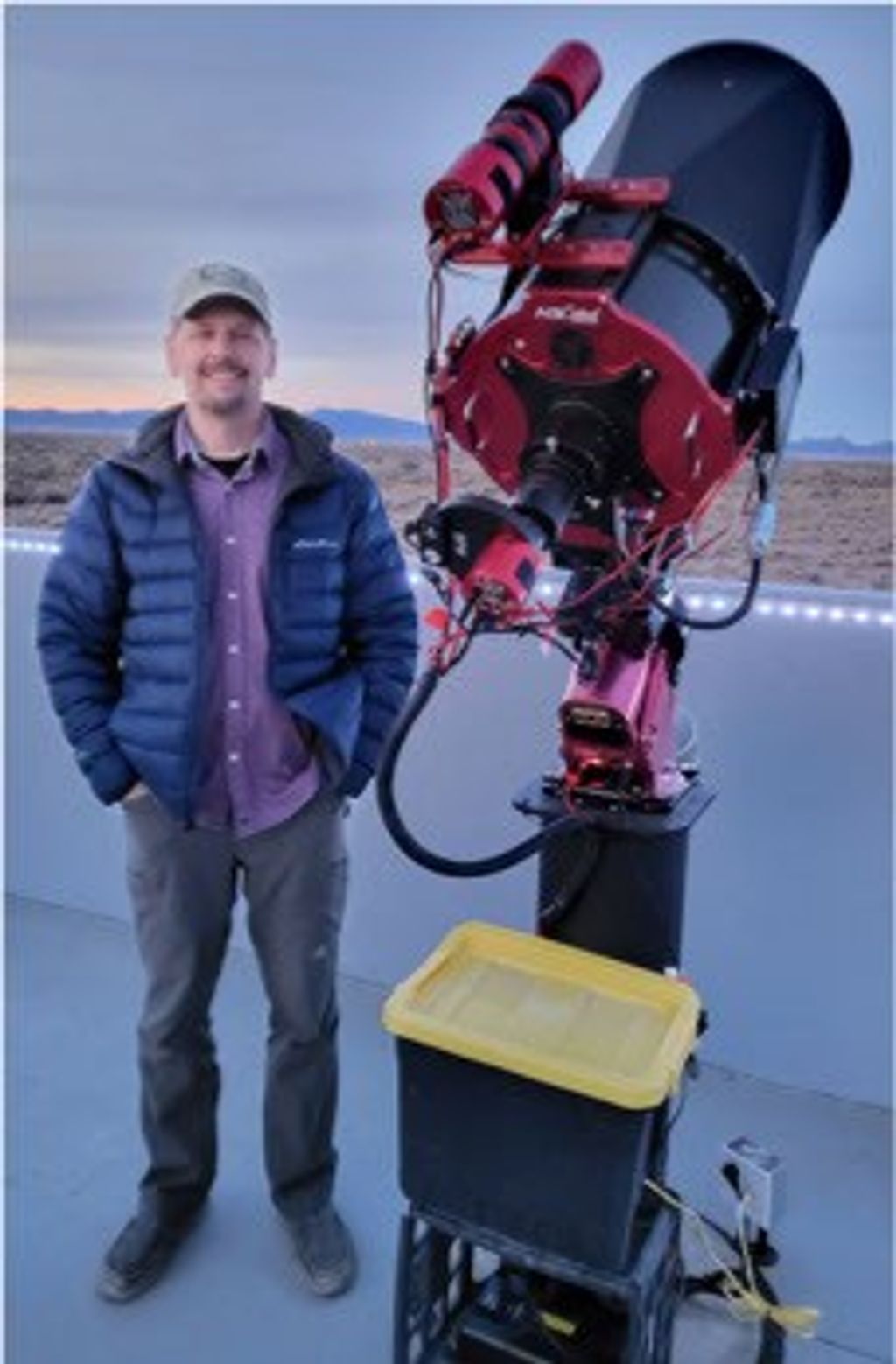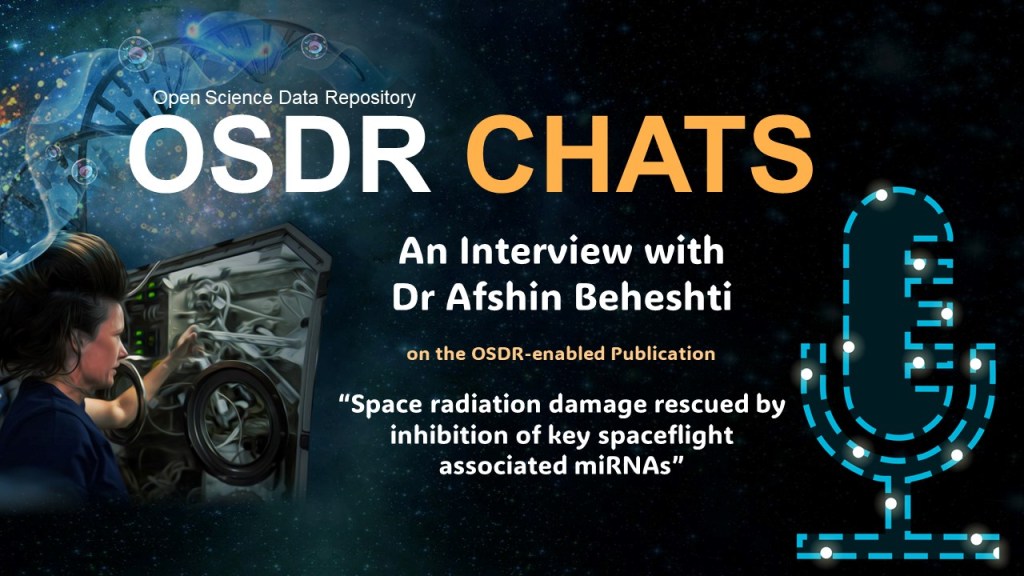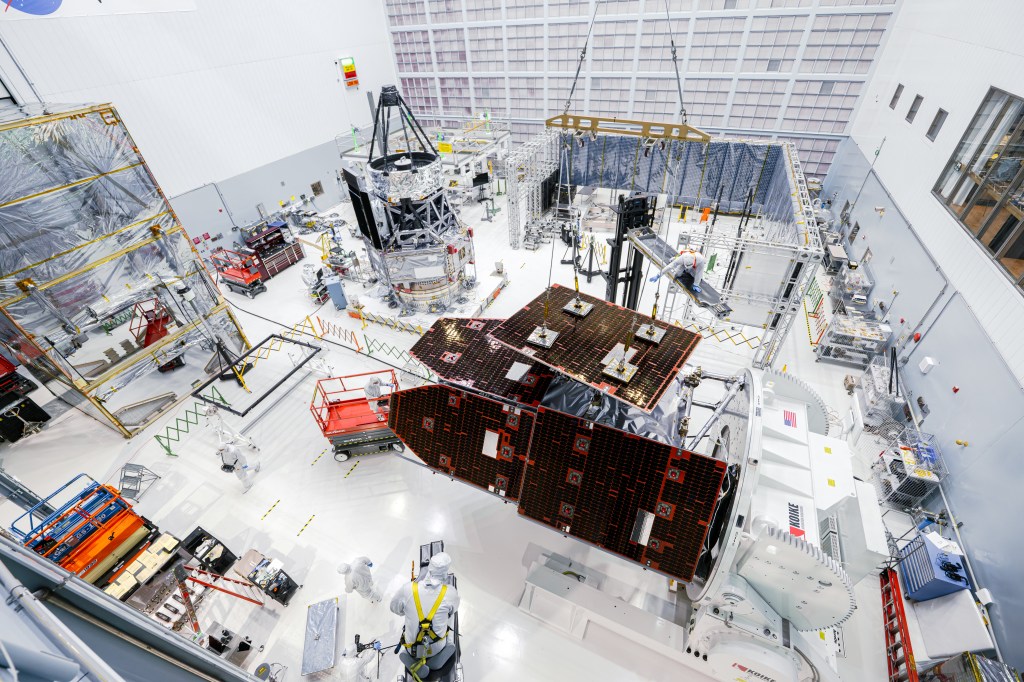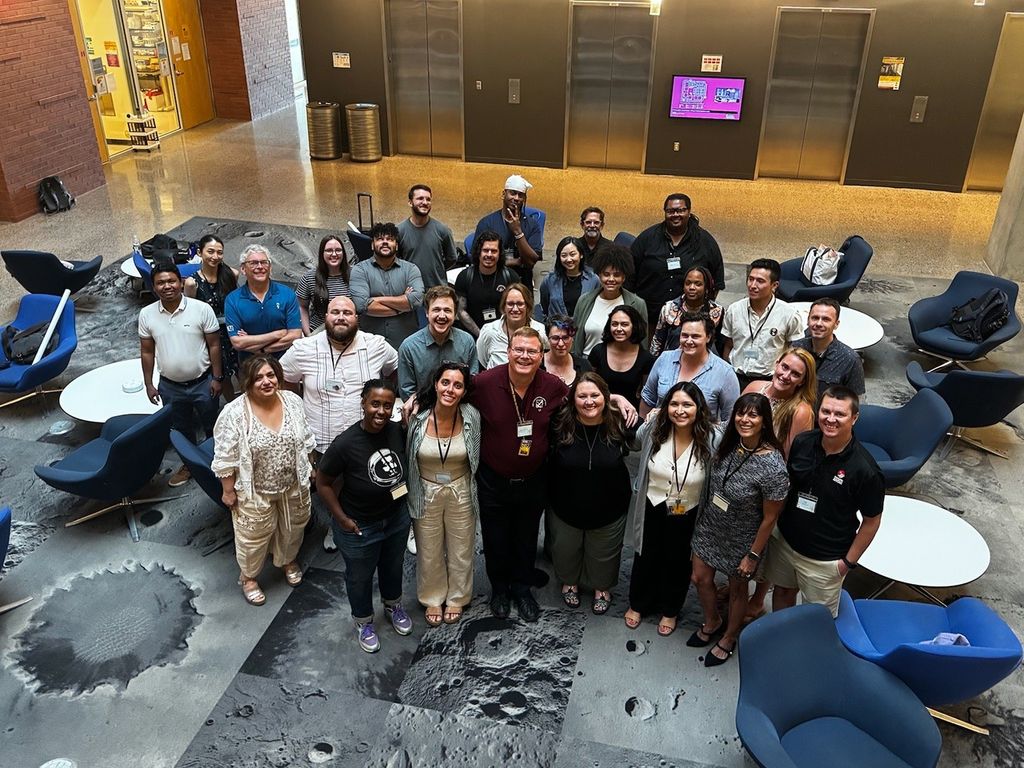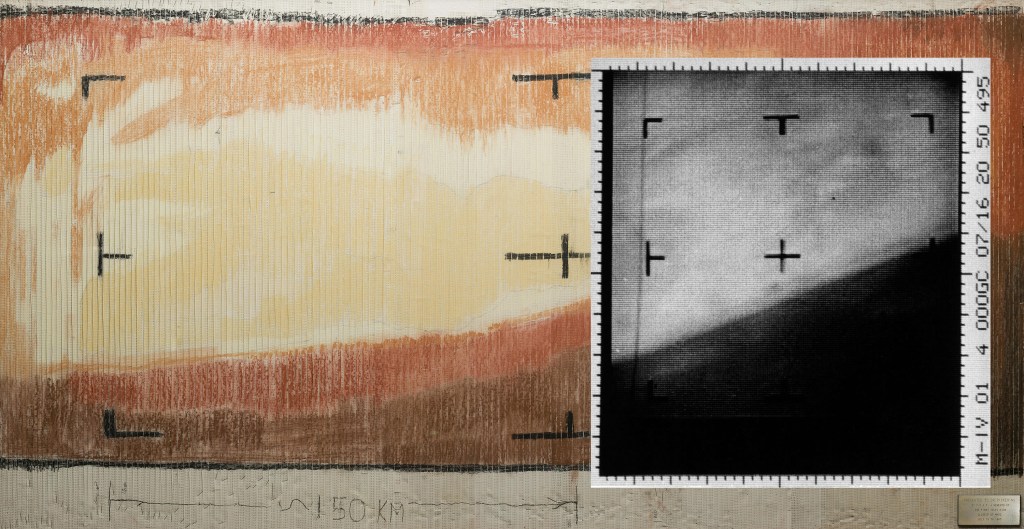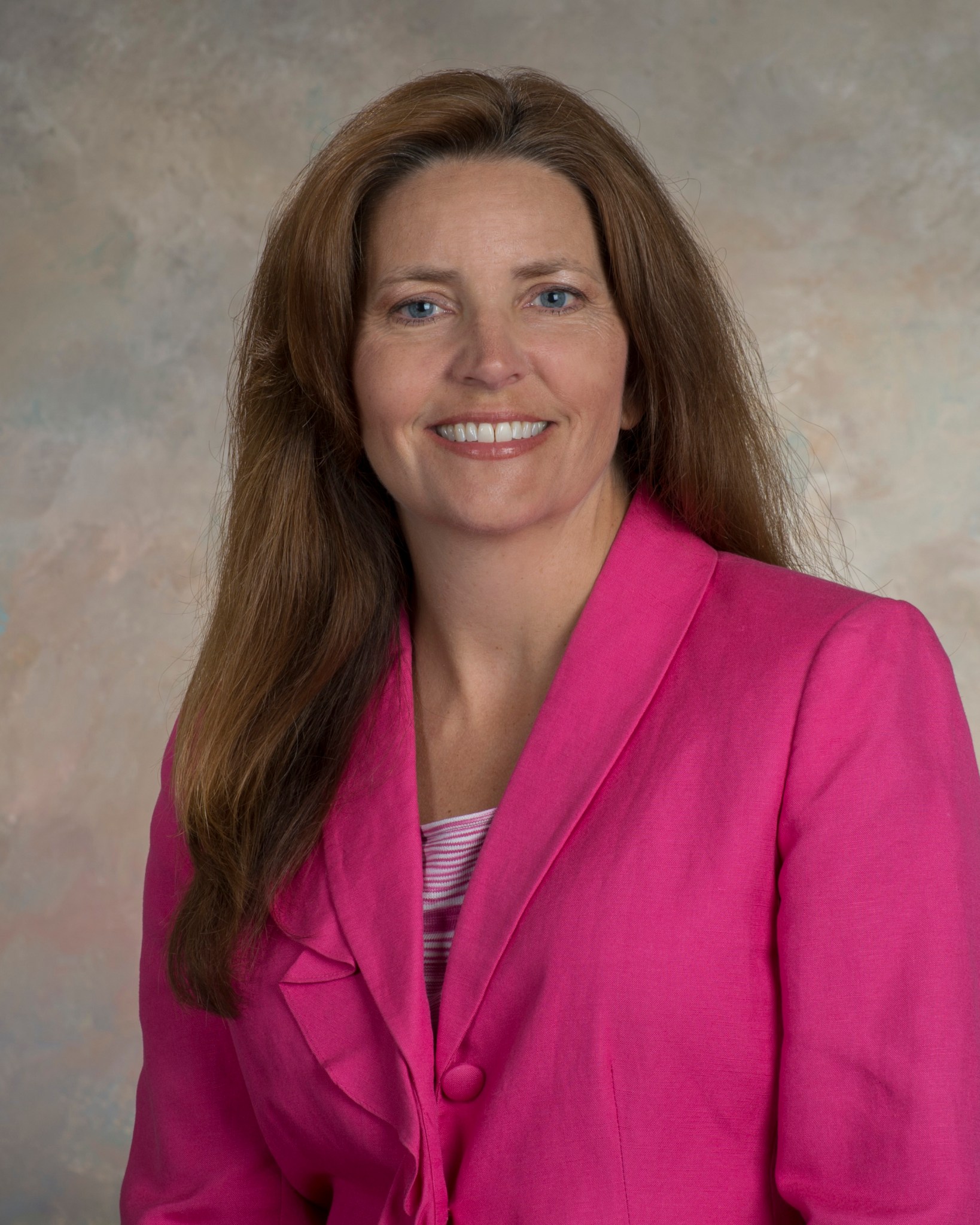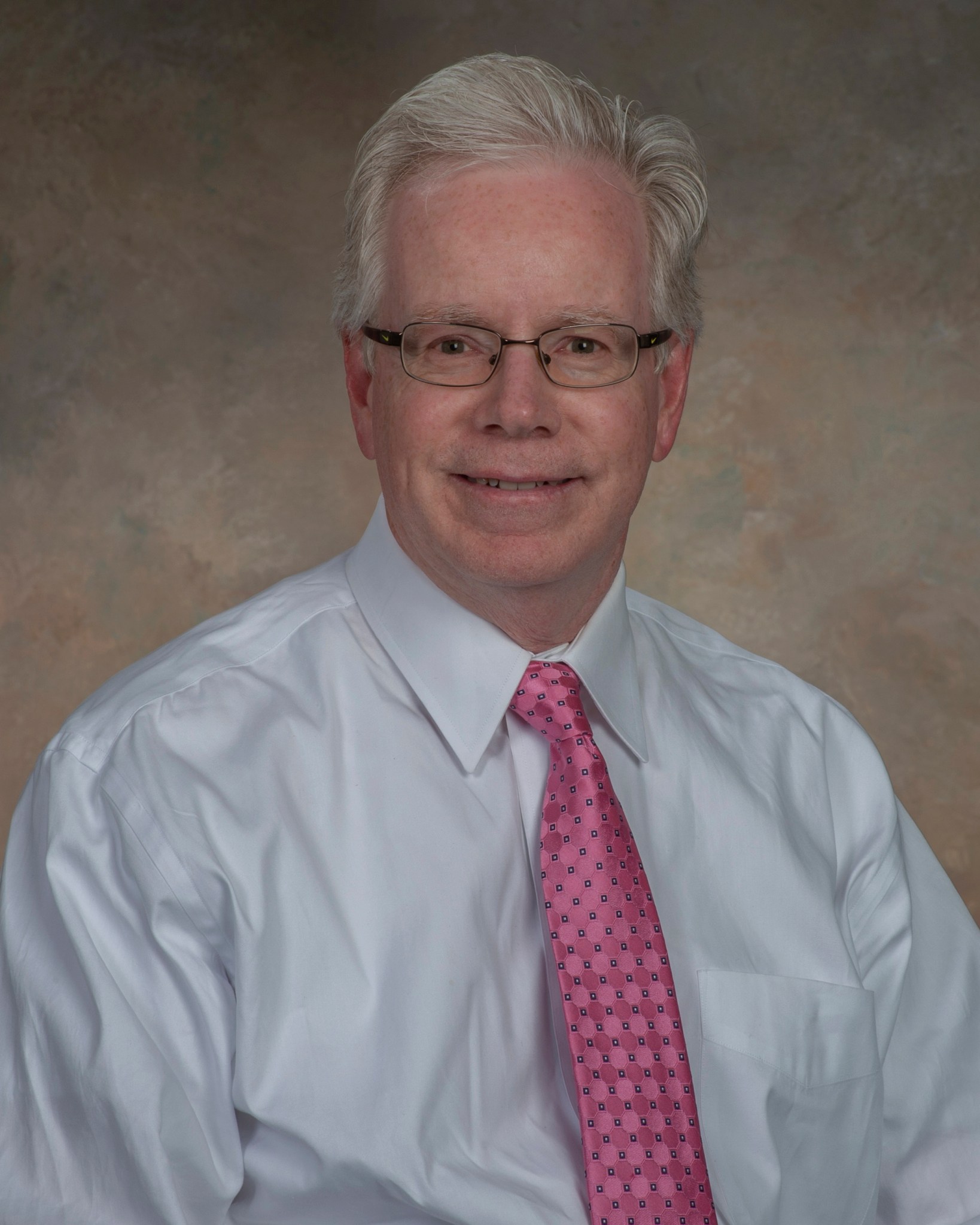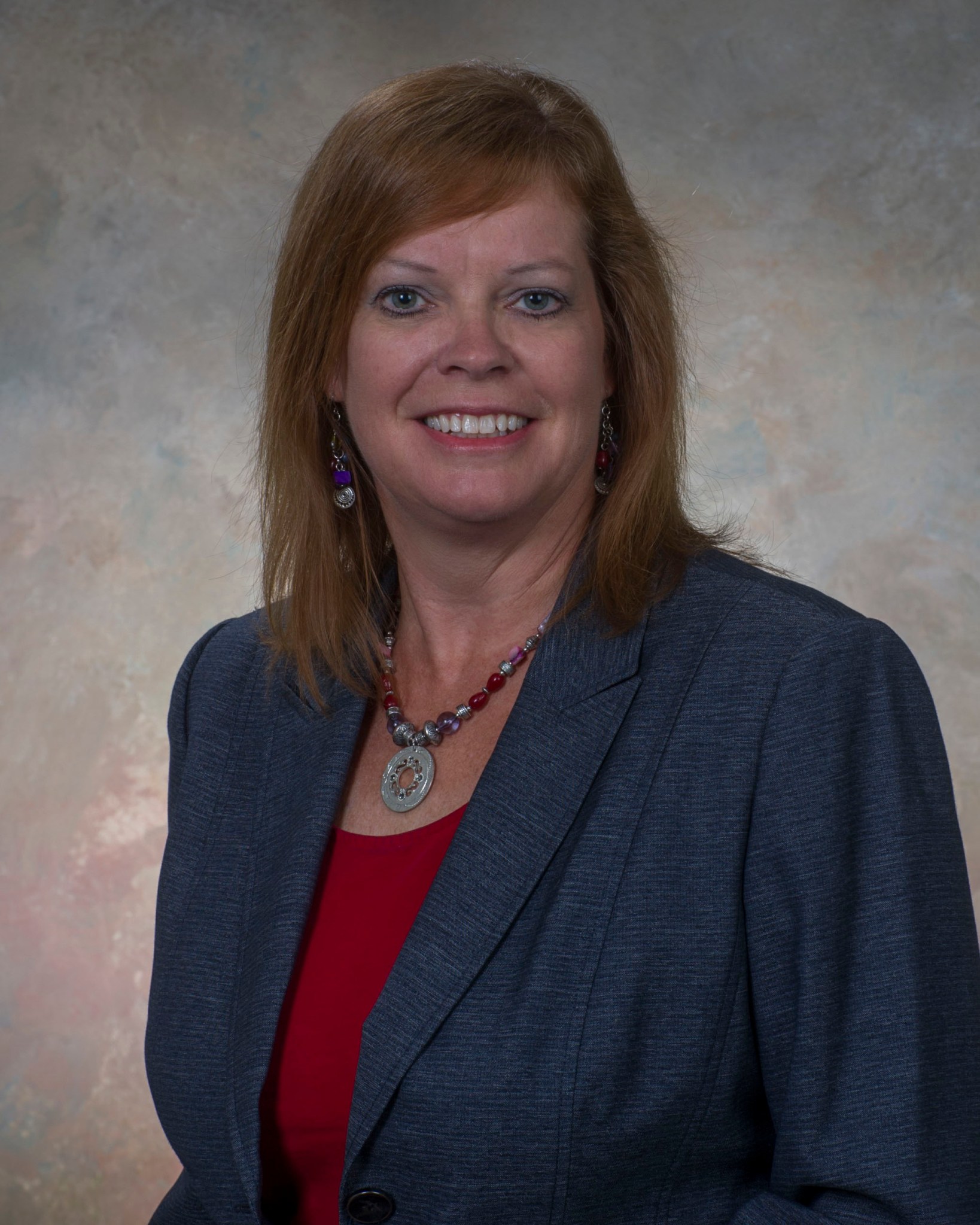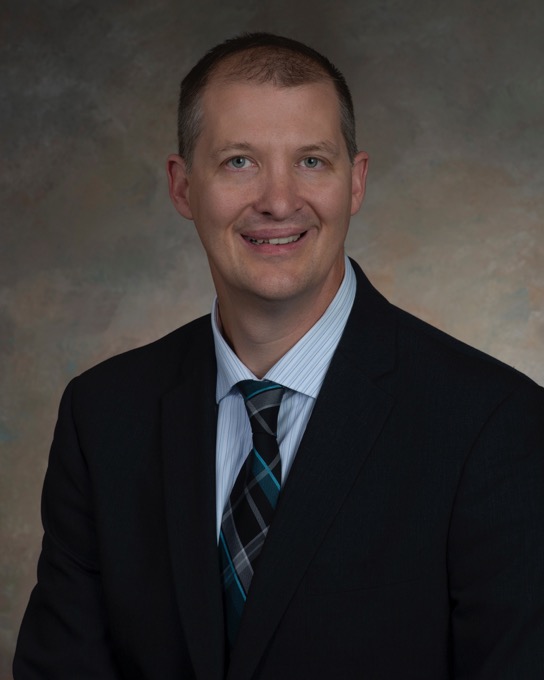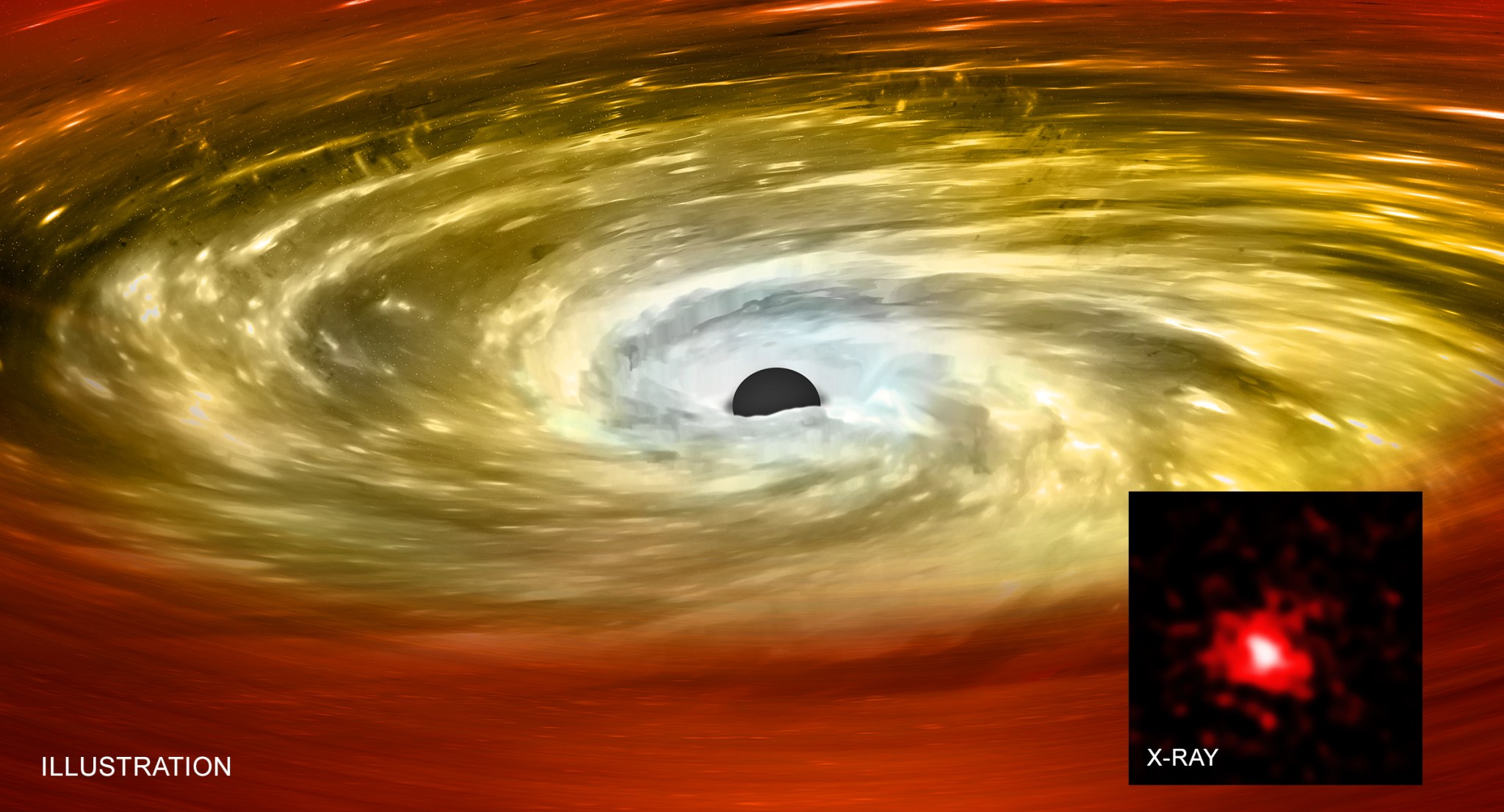In This Week’s Star
- Pair of Leadership Changes Announced for Marshall’s Engineering Directorate
- Julie Bassler named SLS Program Stages Office Manager
- Shenandoah Speers Named Associate Chief Information Officer, Applications Division
- Marshall To Test Flexible Work Day Schedule July 5-6
- Foam and Cork Insulation Protects Deep Space Rocket from Fire and Ice
- Red Nuggets’ Are Galactic Gold for Astronomers
- 2018 ‘Take Our Children to Work Day’ Launches New Memories and Learning
- Marshall Association Awards Five Scholarships; New England Patriots’ Trey Flowers Speaks of Overcoming Adversity
- This Week in NASA History: STS-71 Docks with Mir – June 29, 1995
- Obituaries
Pair of Leadership Changes Announced for Marshall’s Engineering Directorate
Lisa Watson-Morgan has been named associate director of operations in the Engineering Directorate at NASA’s Marshall Space Flight Center. Succeeding her as director of the Spacecraft and Vehicle Systems Department is Charles Finnegan, who most recently served as the department’s deputy director.
Watson-Morgan will help oversee the Engineering Directorate, Marshall’s largest organization, with more than 2,300 civil service and contractor personnel. The directorate is engaged in the design, testing, evaluation and operation of hardware and software associated with space transportation, spacecraft systems, science instruments and payloads in development at Marshall.
Since 2015, Watson-Morgan has served as director of the Spacecraft and Vehicle Systems Department, managing the execution of integrated design, development, test and evaluation of NASA launch vehicles, spacecraft and science programs.
In 2013, she was appointed to the Senior Executive Service as manager of Marshall’s Chief Engineer’s office after completing a detail assignment as associate technical director for the Engineering Directorate. SES is the personnel system covering top managerial positions in federal agencies.
Watson-Morgan was named chief engineer of Marshall’s Flight Programs and Partnerships Office in 2011. She was responsible for technical excellence and implementing technical authority for the center across programs and projects in all NASA mission directorates.
From 2008 to 2011, Watson-Morgan worked in Marshall’s Science and Mission Systems Office, in various leadership positions, responsible for the strategic planning and project management, including the integration of and process for all International Space Station Engineering Research & Technology Demonstrations for the center.
She began her career at Marshall in 1989 as a cooperative education student, and worked in the Mission Operations Laboratory as a data management controller for the ATLAS-3 Spacelab mission. In 1995, she became lead for the Operations Utilization Team, heading Kaizen efforts for the ground operations processes and working ground operations requirements within the Huntsville Operations Support Center for Spacelab, the International Space Station and the Space Shuttle Program. In 2005, she was promoted to Ground Systems Operations branch chief.
Finnegan was appointed to the SES position of Spacecraft and Vehicle Systems Department deputy director in 2015. He was named chief engineer of Marshall’s Science and Technology Office in 2011, after serving a detail at NASA Headquarters as deputy chief engineer for the Science Mission Directorate.
In 2007, Finnegan became chief of the Propulsion System Department’s Analysis Division and chief engineer of the Ares I Upper Stage element in 2008.
He joined Marshall in 1987 as a structural analyst and lead engineer in the Structures & Dynamics Laboratory. He was promoted to team lead of the Strength Analysis Group in 1999, deputy group lead in 2001 and group lead in 2002. Following a reorganization of the Engineering Directorate in 2004, he became chief of the Structural & Dynamic Analysis Branch in the Propulsion Systems Department.
Julie Bassler named SLS Program Stages Office Manager
Julie Bassler has been named manager of the Space Launch System Program Stages Office at NASA’s Marshall Space Flight Center.
Responsible for all facets of the SLS Core Stage and Exploration Upper Stage, Bassler will lead an integrated team of 2,050 prime contractor employees and 798 government in-house civil servants and support contractors and will oversee a 10-year prime contract valued at $6.2 billion with 458 suppliers across 42 states.
Bassler’s professional experiences span the areas of human spaceflight, robotic missions, science payloads and technology development. She has been in progressively responsible technical and management roles at NASA’s Johnson Space Center and Marshall.
Since February 2018, Bassler has served as acting manager of the Stages Office and was previously its deputy manager since December 2012. She was assigned to the SLS Program Office in 2011 as element integration manager for the Stages Office.
She was project manager of the International Lunar Network Anchor Nodes mission and Robotic Lunar Lander Development Project from 2009 to 2011; and was deputy program manager of the Lunar Precursor Robotic Program from 2006 to 2008. From 2004 to 2005, Bassler managed the Technology and Capability Development Projects Office at Marshall.
From 1997 to 2004, she worked in the International Space Station Program, including as manager of Program Planning and Control for the space station microgravity science racks, and payloads and program manager for Materials Science Research Rack 1.
Bassler transferred to Marshall in 1997 as a safety engineer for the International Space Station Assurance Office. She joined NASA as a civil servant in 1994 as a systems engineer in the International Space Station Program Office at Johnson. She began her career as a contractor at Johnson as a software engineer for the Shuttle Flight Dynamics Department.
Shenandoah Speers Named Associate Chief Information Officer, Applications Division
Shenandoah Speers has been appointed to the Senior Executive Service position of associate chief information officer in the Applications Division of NASA’s Office of the Chief Information Officer.
Located at NASA’s Marshall Space Flight Center, Speers will oversee an annual budget of $78 million and a highly specialized workforce of approximately 68 civil service and 338 contractor employees.
The Applications Division of NASA’s Office of the Chief Information Officer manages the agency’s information technology applications portfolio and develops and maintains applications architecture and strategy. The division also develops, implements, manages and supports NASA enterprise and center business applications.
Speers will report administratively to the agency’s chief information officer and functionally to Marshall’s.
In 2015, he was named deputy manager of the Information Services Division of the Federal Aviation Administration’s Enterprise Services Center in Oklahoma City, responsible for an annual budget of $110 million, spanning multiple IT services with approximately 300 civil service and 305 contractor employees.
Speers joined the services center in 2012 as manager of the Financial Systems Branch. He was named architect and design manager in 2014, responsible for directing the planning, development research, analysis, programming and operational support for major national computer systems.
In 2002, Speers began his career in federal service as an IT specialist database administrator with the Defense Information Systems Agency in Oklahoma City. From 2003 to 2012, he was an IT specialist for the U.S. Air Force’s 72nd Air Base Wing Communications Directorate, supporting Tinker Air Force Base in Oklahoma City and the Department of Defense.
He began his career in the private sector as an applications software engineer, web developer and Oracle database administrator.
Marshall To Test Flexible Work Day Schedule July 5-6
By Morgan MacMillan
NASA’s Marshall Space Flight Center is following the lead of other government organizations with the test of a flexible work day schedule July 5-6.
Other NASA centers, such as Johnson Space Center, have already transitioned to a 9/80 schedule that allows team members to work 80 hours in nine days, resulting in every other Friday off. Leadership recognized the possible benefits from this schedule, including a potential cost savings and a boost to employee morale.
Data results from this test will allow Marshall officials to analyze the operational changes required to implement a flexible work day, or 9/80 schedule, full time for fiscal year 2019, starting Oct. 1, 2018.
“The Center Operations and Management budget has been reduced by 18 percent over the last 10 years, and we expect our budget to continue to decrease in this area,” said Roy Malone, director of the Office of Center Operations. “To absorb these reductions, Center Operations has been looking for innovative ways of reducing cost, while minimizing the reduction of services.”
Records from past years show that 75 percent of Marshall’s workforce normally takes leave around holidays. A holiday period would provide an opportunity to determine how much money could be saved when fewer facilities are open. Buildings not designated to be open will be in weekend mode, closed, with no air conditioning.
“When your family leaves to go on vacation, you turn down your air conditioning,” said Bob Devlin, deputy director of Center Operations. “This will be the same concept for Marshall during these two days. Buildings will use less resources in weekend mode and the pilot program will allow us to see how much that could potentially save the center.”
Team members working on-site at Marshall on those days, whose buildings are operating in weekend mode, will report to a designated on-site workplace in Building 4267, as instructed by their supervisors. With essential buildings open during the test period, Marshall will not be considered closed July 5-6.
Marshall cafeterias and the Marshall Medical Center will be closed, but the food truck corral and snack area in Building 4708 will remain open for team members who are working in open buildings or a designated on-site workplace.
For more information on the scheduled test and frequently asked questions, managers should visit the Flexible Work Day Schedule Test page in ExplorNet here. Information includes an updated list of buildings that will be open; how to handle medical emergencies during the test period; availability of technical support; and how to record time. Additional questions can be posted within the ExplorNet document.
MacMillan, an ASRC Federal/Analytical Services employee, supports the Office of Strategic Analysis & Communications.
Foam and Cork Insulation Protects Deep Space Rocket from Fire and Ice
By Kaitlin C. Rogers
Extreme temperatures — ranging from minus 423 degrees Fahrenheit to more than 200 degrees Fahrenheit — call for novel thermal protection systems on NASA’s Space Launch System rocket. NASA is advancing state-of-the-art technology for thermal protection with more environmentally friendly materials and 3D-printed molds for smaller parts. With the power and precision needed for sending humans to deep space, SLS will launch astronauts in NASA’s Orion spacecraft to the Moon, Mars and beyond.
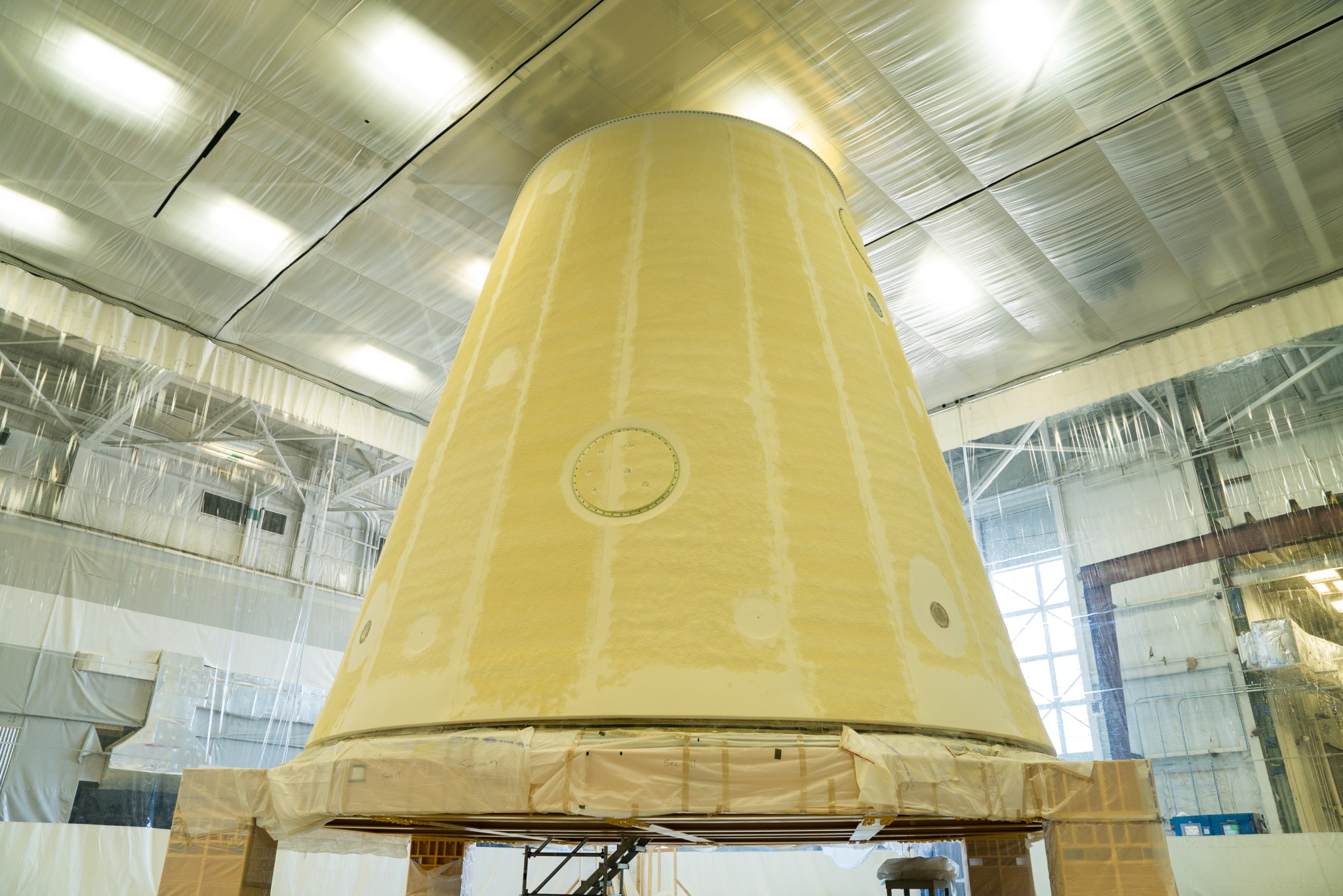
Spray-on foam insulation, along with other traditional insulation materials such as cork, will provide thermal protection for every rocket part, large and small. The insulation is flexible enough to move with the rocket but rigid enough to take the aerodynamic pressures as SLS accelerates from 0 to 17,400 miles per hour and soars to more than 100 miles above Earth in just 8 minutes. The cryogenic fuel, made up of liquid hydrogen and liquid oxygen, that powers the rocket has to stay extremely cold to remain liquid. Hydrogen has to remain at minus 423 degrees Fahrenheit and oxygen at minus 298 degrees Fahrenheit. If temperatures rise too high, the fuel would become a gas.
“As the Space Launch System flies, it builds up tremendous heat. Without insulation, heat from launch would affect the stability of the cryogenic propellants and the rocket’s structural integrity would be compromised,” said Michael Alldredge, who leads the thermal protection system team for the SLS core stage at Marshall.
Materials engineers qualified the third-generation, orange-colored spray-on foam insulation to meet the harsh environments that SLS will experience. The foam insulation is composed of two liquids — isocyanate and a special polyol blend — that stay separate in the pumping system and mix in the spray gun before releasing and rising into foam — similar to hair mousse. When the foam is applied, it gives the rocket a light-yellow color that the Sun’s ultraviolet rays eventually “tan,” giving the SLS core stage its signature orange color.
Foam will protect the larger pieces of hardware, including the entire core stage that is the 212-foot-tall backbone of the rocket. The foam is applied with robotic or hand-held spray guns. Much like painting walls in a home, the hardware has to be primed and taped off before spraying begins. Primer serves as corrosion protection from the environment and enhances the bond between the insulation and the rocket.
Engineers will use a robotic system to apply both primer and foam to the cryotanks at Michoud Assembly Facility where the core stage is being built. Manually sprayed foam will cover the domes, or bottoms, of both cryotanks. The largest piece of SLS hardware built at Marshall, the launch vehicle stage adapter, which serves as a connector between the core stage and the interim cryogenic propulsion stage, will have manually sprayed foam.
The original plan was to use cork for the SLS launch vehicle stage adapter, according to Amy Buck, Marshall’s launch vehicle stage adapter thermal protection systems lead, but the foam is lighter. “Since we have the resources to spray it by hand at Marshall, we are saving time and money because we don’t have to ship it to Michoud,” she said.
Insulation protects many small parts of the rocket that play big roles. The avionics, the “brains” of the rocket, are located throughout the vehicle. Other small parts like the intertank’s exterior pockets require manually sprayed foam or foam cast with 3D printed molds.
Some small hardware requires pour foam that is mixed and poured into a mold before it expands to fill the shape it enters. Other parts need cork, which is heavier than foam but provides even stronger protection for certain applications.
Cork comes in sheets and is applied to areas that have high predicted heat loads, like the core stage engine section, which houses four RS-25 engines that produce 2 million pounds of thrust. Cork is also applied under the solid rocket boosters that provide 75 percent of thrust at liftoff.
After thermal protection material density and adhesion are verified for both foam and cork, engineers take thickness measurements to ensure the required amount of thermal protection has been applied. The final system-level test of the insulation, prior to flight, will be when the entire core stage is tested with all four RS-25 engines firing. During launch and flight, the foam and cork will guard the hardware as hot and cold collide.
Rogers, an ASRC Federal/Analytical Services employee, supports the Office of Strategic Analysis & Communications.
Red Nuggets’ Are Galactic Gold for Astronomers
About a decade ago, astronomers discovered a population of small, but massive galaxies called “red nuggets.” A new study using NASA’s Chandra X-ray Observatory indicates that black holes have squelched star formation in these galaxies and may have used some of the untapped stellar fuel to grow to unusually massive proportions. Red nuggets were first discovered by the Hubble Space Telescope at great distances from Earth, corresponding to times only about 3 billion or 4 billion years after the Big Bang. They are relics of the first massive galaxies that formed within only 1 billion years after the Big Bang. Astronomers think they are the ancestors of the giant elliptical galaxies seen in the local universe. The masses of red nuggets are similar to those of giant elliptical galaxies, but they are only about a fifth of their size. While most red nuggets merged with other galaxies over billions of years, a small number managed to slip through the long history of the cosmos untouched. These unscathed red nuggets represent a golden opportunity to study how the galaxies, and the supermassive black hole at their centers, act over billions of years of isolation. For the first time, Chandra has been used to study the hot gas in two of these isolated red nuggets, MRK 1216, and PGC 032673. They are located only 295 million and 344 million light years from Earth respectively, rather than billions of light years for the first known red nuggets. NASA’s Marshall Space Flight Center manages the Chandra program for NASA’s Science Mission Directorate. The Smithsonian Astrophysical Observatory in Cambridge, Massachusetts, controls Chandra’s science and flight operations. (NASA/CXC/MTA-Eötvös University/N. Werner et al., Illustration: NASA/CXC/M. Weiss)
2018 ‘Take Our Children to Work Day’ Launches New Memories and Learning
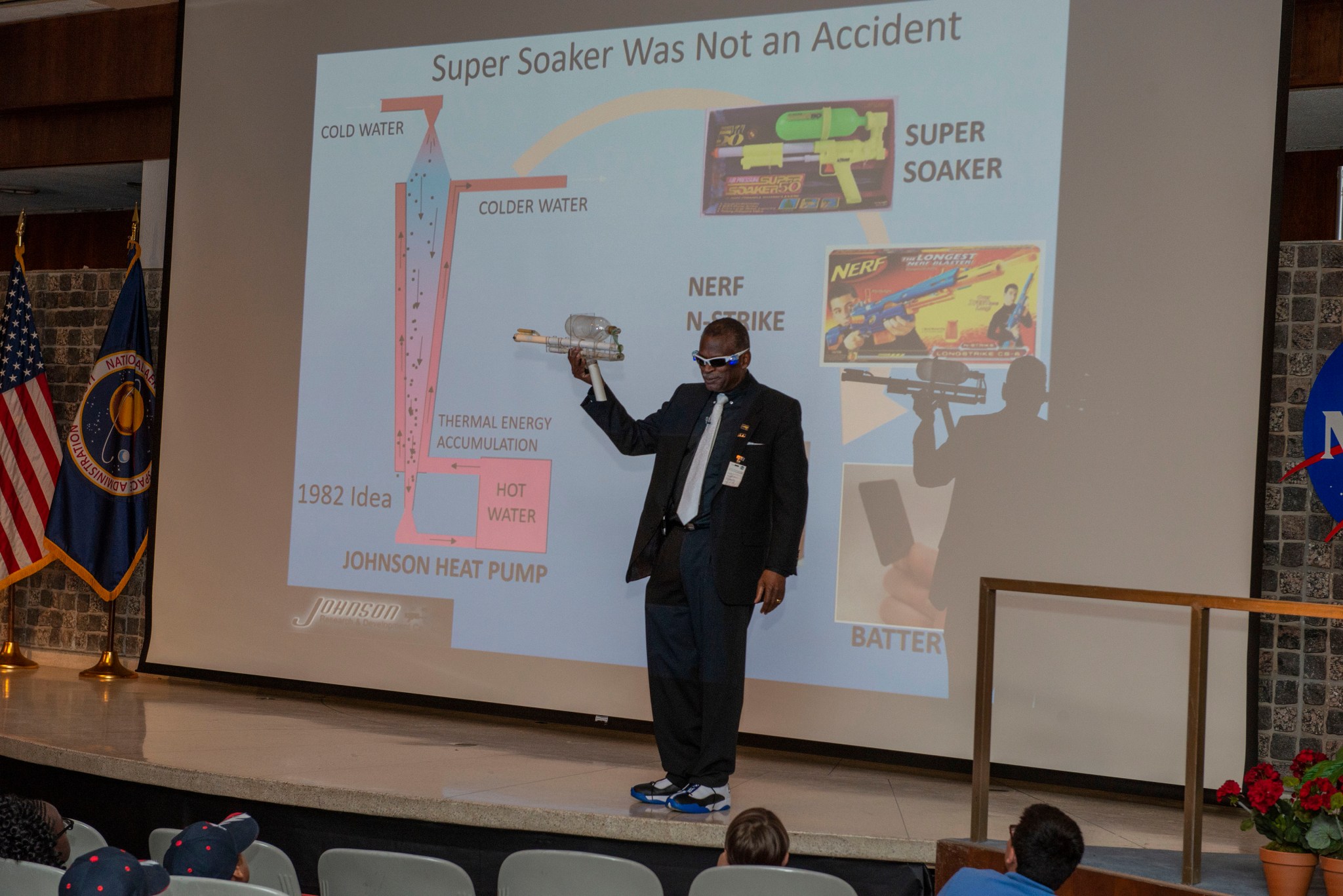
Lonnie Johnson, a former NASA engineer and creator of the Super Soaker water gun, displays the first prototype and talks about the development of the toy to an audience gathered for NASA Marshall Space Flight Center’s “Take Our Children to Work Day” June 21. The event was organized by Marshall’s Office of Diversity and Equal Opportunity to allow the children and grandchildren of Marshall team members to get a glimpse into what their family members do at work, while engaging and encouraging them to pursue careers in the STEM fields of study — science, technology, engineering and math. (NASA/Fred Deaton)
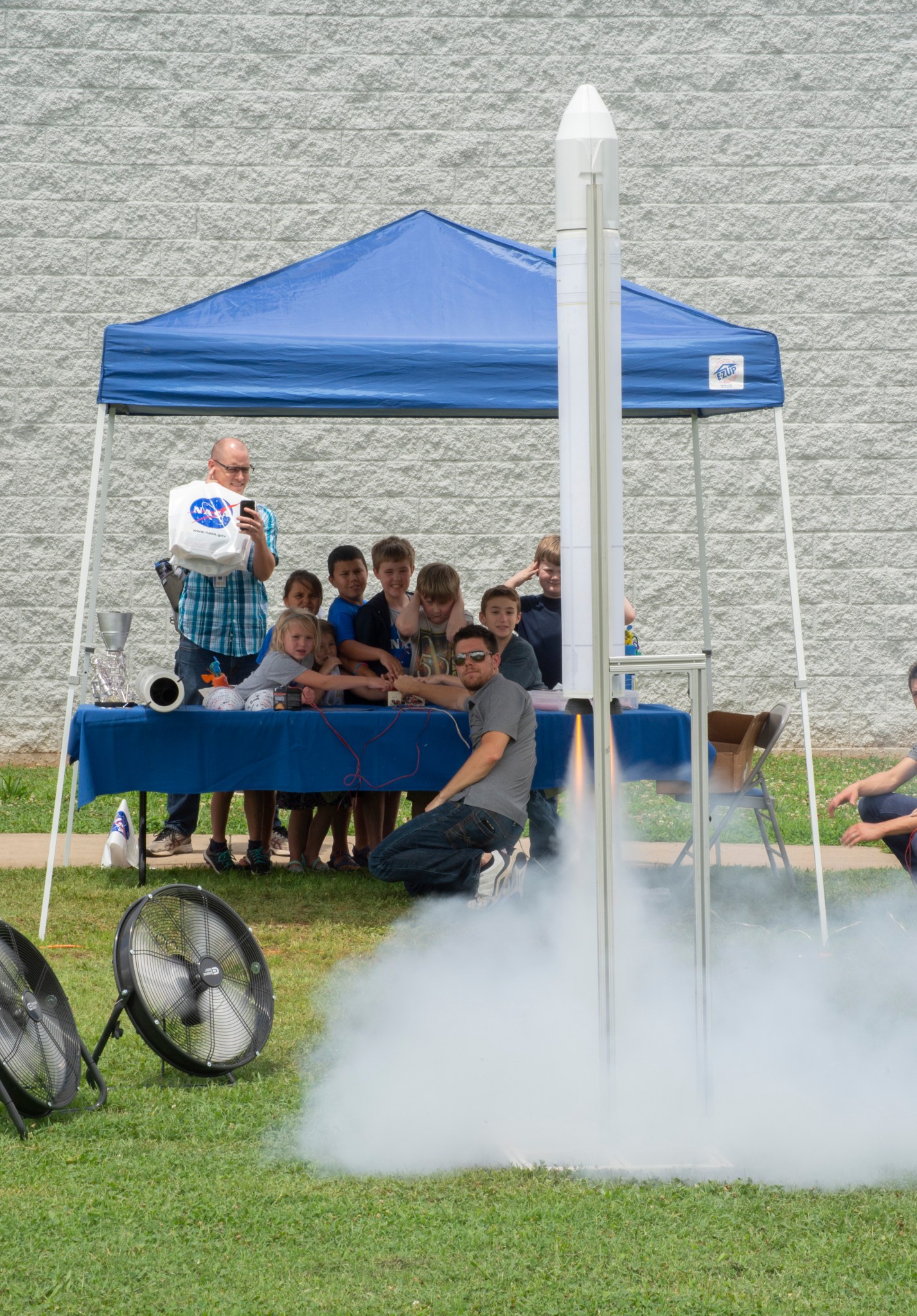
A group of excited kids press the ignition button and watch as a small rocket is test fired outside Building 4316. The demonstration helps the children and grandchildren of the Marshall workforce experience a critical part in rocket development. Part of Marshall’s annual “Take Our Children to Work Day,” the demonstration was hosted by Northrop Grumman. (NASA/Emmett Given)
Marshall Association Awards Five Scholarships; New England Patriots’ Trey Flowers Speaks of Overcoming Adversity
By Jonathan Deal
The Marshall Association, a professional employee service organization at NASA’s Marshall Space Flight Center, has awarded $7,500 in scholarships to five recent high school graduates.
Selected from a pool of candidates based on their academic records, extracurricular activities, letters of recommendation and a written essay, Justice Chasteen, Sydney Goggans, Joelle Kim, Keiffer Robinson and Charmain Su each received $1,500 scholarships.
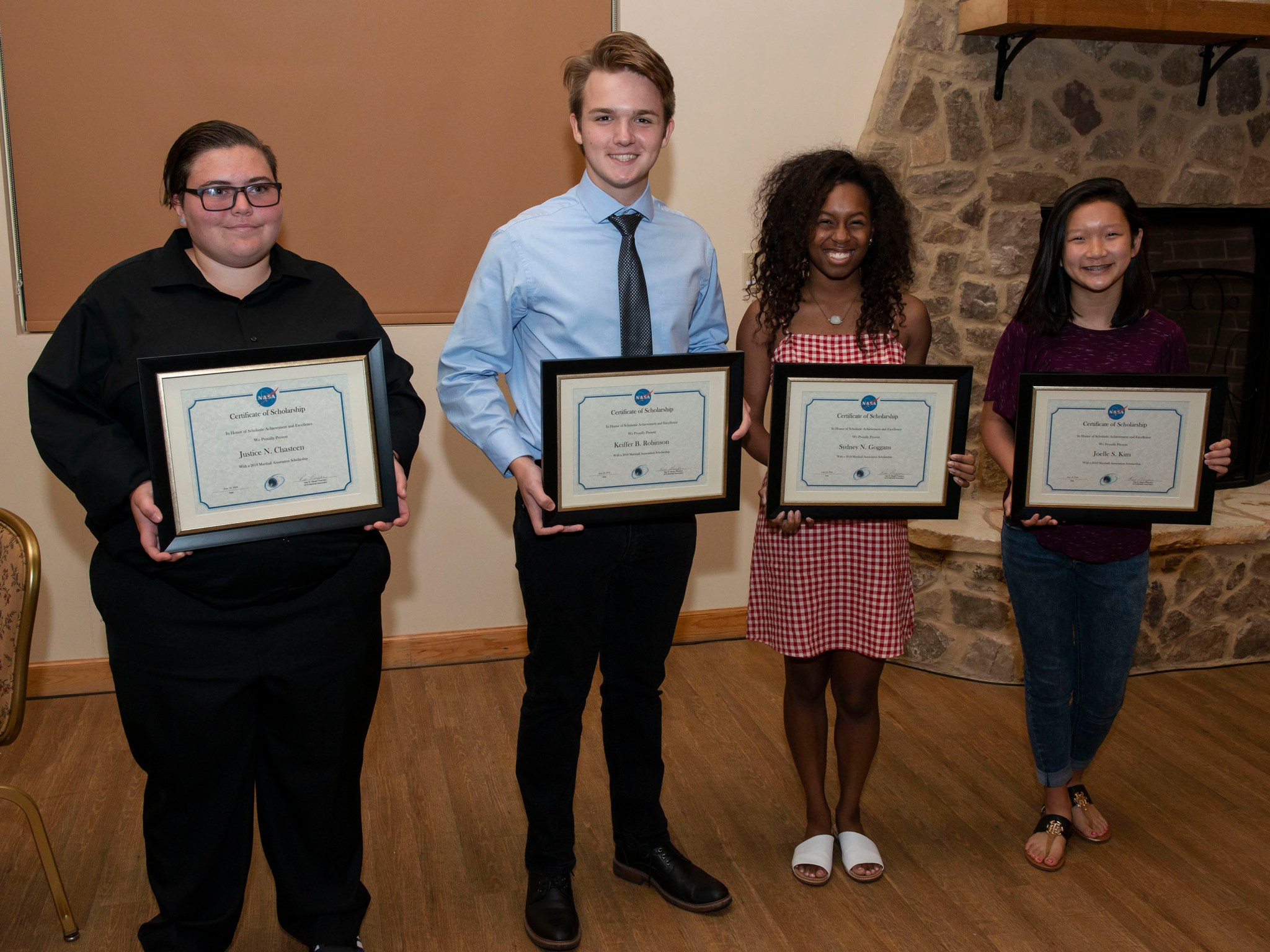
Three of the scholarship recipients plan to study STEM-related fields, and two will pursue other academic areas at the collegiate level. Marshall Association board members said these selections recognized the diversity of Marshall’s workforce and the association itself.
Each year, the association awards its members’ deserving children with scholarships for their academic pursuits in higher education. The awards are funded from membership dues and donations.
Chasteen will attend the University of North Alabama in Florence, where she will pursue a career in culinary arts. She is the daughter of Tina Chasteen of the Accounting Operations Office.
Goggans will attend Spelman College in Atlanta, Georgia, where she plans to study English and pursue minors in writing and film and visual culture. She is the daughter of Eugenia Goggans of the Human Exploration Development & Operations Office.
Kim is currently studying medicine and medical research at Baylor University in Waco, Texas. She is the daughter of Tony Kim of the Science and Technology Office.
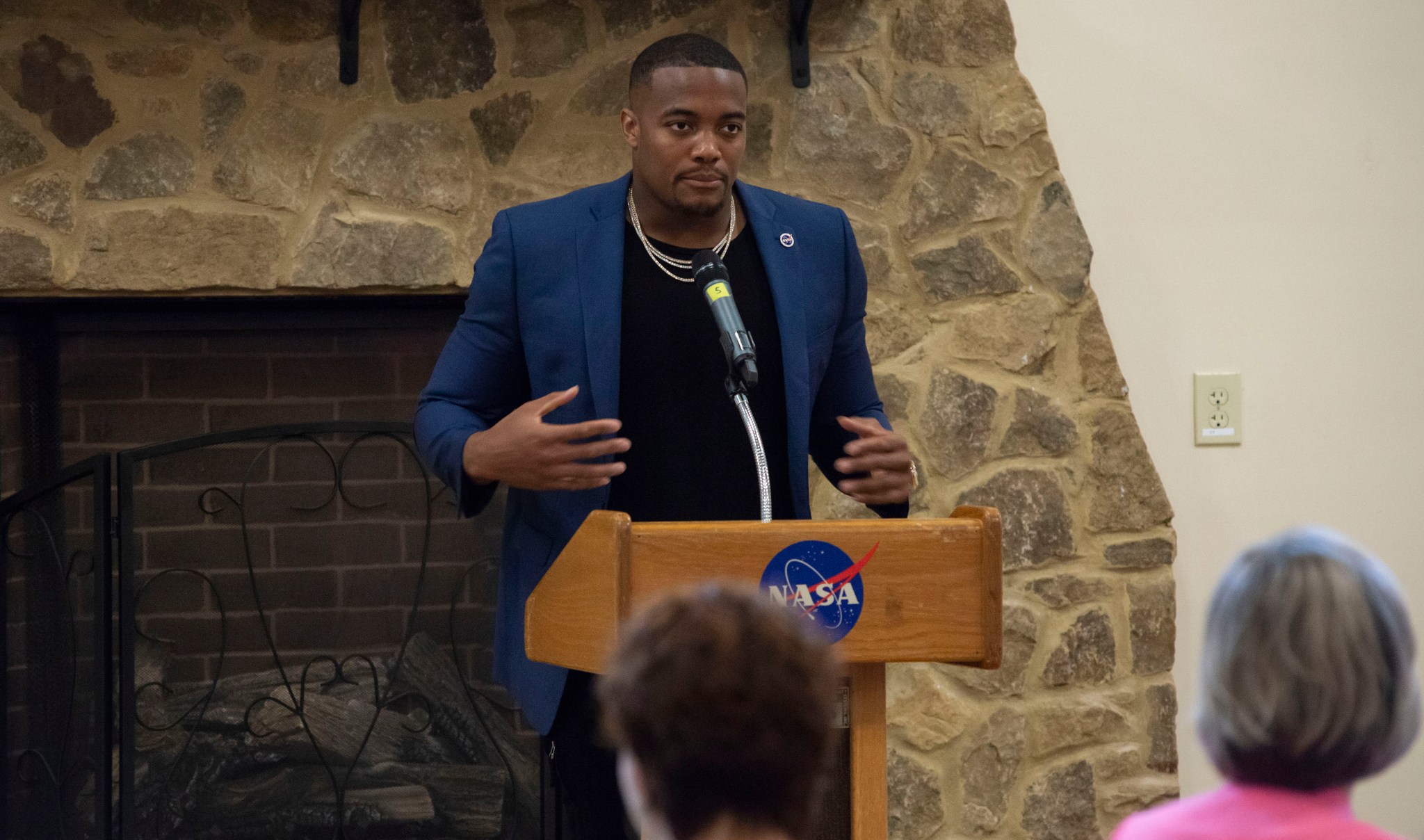
Robinson will attend Auburn University in Auburn, Alabama, where he plans to study engineering. He is the son of Keith Robinson of the Science and Technology Office and Kimberly Robinson of the Space Launch System Program Office.
Su plans to study physics at either Rensselaer Polytechnic Institute in Troy, New York, or the University of California in Los Angeles. Su is the daughter of Ching-Hua Su of the Materials and Processes Laboratory.
The scholarships were awarded June 20 at a Marshall Association luncheon featuring keynote speaker Trey Flowers, professional football player for the New England Patriots in the National Football League. Flowers, a defensive end, helped the Patriots win Super Bowl LI in 2017 with a game-high 2 ½ sacks in a 34-28 victory over the Atlanta Falcons.
The Huntsville native spoke about the adversity he faced coming out of Columbia High School as an under-the-radar recruit to eventually being selected for the All-Southeastern Conference Team at the University of Arkansas in Fayetteville in 2013.
“You are here for a reason,” Flowers told the scholarship recipients. “The things that you’ve done to get you where you are today are things that will take you to where you want to be in the future. The world is full of adversity. The way you study, work hard and stay focused — those are the things you want to hang on to.”
The Marshall Association was established to build the exchange of innovative and stimulating ideas within the Marshall community. The self-governing organization sponsors several activities throughout the year and sponsors a speaker program addressing topics of interest to Marshall team members.
Deal, an ASRC Federal/Analytical Services employee and the Marshall Star editor, supports the Office of Strategic Analysis & Communications.
This Week in NASA History: STS-71 Docks with Mir – June 29, 1995
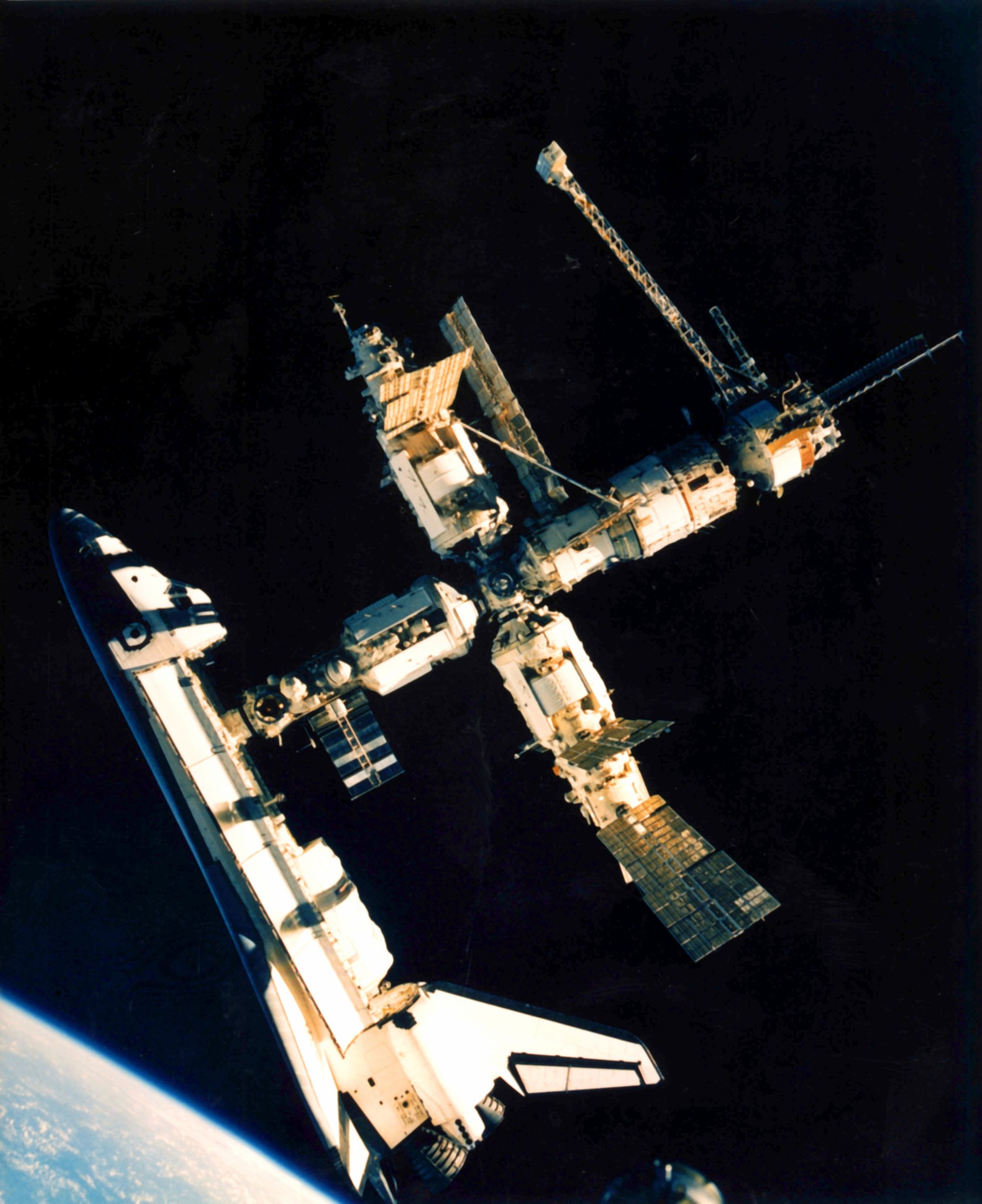
This week in 1995, space shuttle Atlantis, mission STS-71, launched from NASA’s Kennedy Space Center. STS-71 marked the first time the shuttle and the Russian space station Mir docked. It was also the first on-orbit changeout of shuttle crew. In this photo taken by the Mir crew, Atlantis is still connected to the Mir station. For the next five days, joint U.S.-Russian operations conducted about 100 hours of science experiments, including biomedical investigations, and transfer of equipment to and from Mir. Fifteen separate biomedical and scientific investigations were conducted using the Spacelab module installed in the aft portion of Atlantis’ payload bay, and covering seven different disciplines: cardiovascular and pulmonary functions; human metabolism; neuroscience; hygiene, sanitation and radiation; behavioral performance and biology; fundamental biology; and microgravity research. The Spacelab missions were managed by NASA’s Marshall Space Flight Center. The NASA History Program is responsible for generating, disseminating, and preserving NASA’s remarkable history and providing a comprehensive understanding of the institutional, cultural, social, political, economic, technological and scientific aspects of NASA’s activities in aeronautics and space. For more pictures like this one and to connect to NASA’s history, visit the Marshall History Program’s webpage. (NASA)
Obituaries
Joe H. Thomas Sr., 78, of Huntsville, died June 19. He retired from the Marshall Center in 1994 as an aerospace engineer. He is survived by his wife, Kathlyn M. Thomas.


